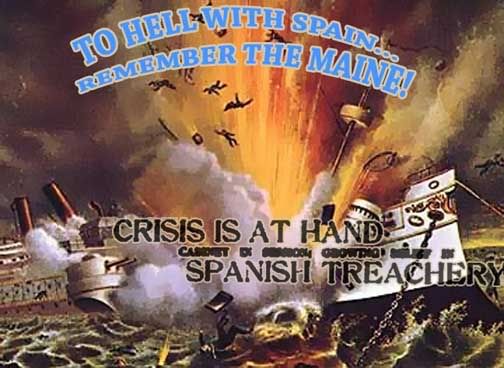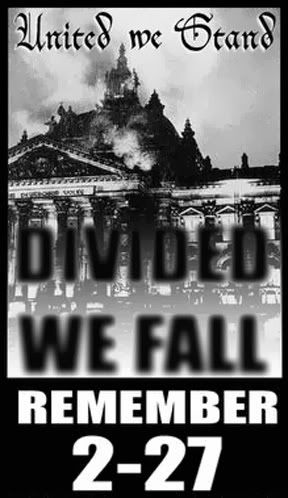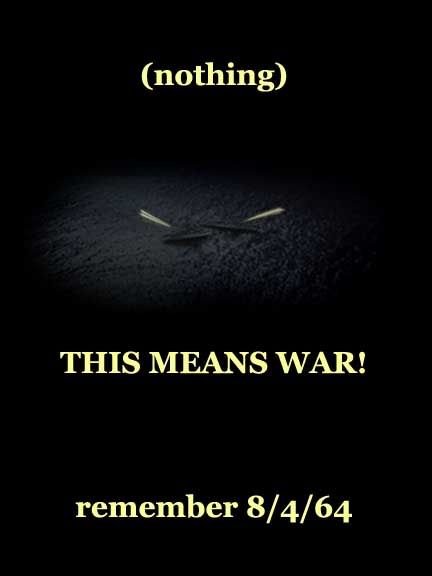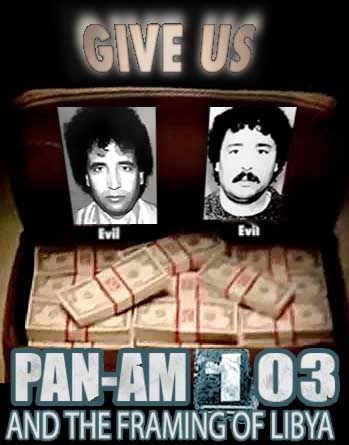Adam Larson / Caustic Logic
The 12/7-9/11 Treadmill and Beyond
March 15 2009
last edit/update 3/28
THE CODE SET-UP
Perhaps due to its poetic nature and readability enhancement it offers, the “winds code” system has figured widely into most accounts of the Pearl Harbor attack. And it cerianly became a part of the story that can’t be ignored, but not for the clues or hints of Haiku contained within. For purpose of American detectives at the time, the code proved good only for making a lot noise without any substance, indeed, like the wind.
"North wind cloudy" ("Kitano kaze kumori") = War with the USSR
"West wind clear" ("Nishi no kaze hare") = War with Great Britain
"East wind rain" ("Higashi no kaze ame") = War with the United States
These were the code phrases conveyed in the “set-up message,” sent encoded and encrypted (in the J-19 system) by Japan’s Foreign Ministry to its diplomatic posts around the world. It was intercepted by US intelligence on November 13, decrypted and read on the 28th, just before Tokyo’s stated deadline for a miracle of diplomacy (or else “things will happen automatically.”) The catchy clue was passed on to all relevant parties, including at Pearl Harbor - where it was among the few clues received, and that almost immediately.
This system was basically a back-up reminder to diplomatic staffs, in case regular communication lines should be cut, to take action consistent with the onset of warfare. These included destruction of codes and code machines and any secret files in the case of hostilities (real or imminent) with any combination of the three allied nations. Any expected delivery of the code words came to be known as a “winds execute” message to be embedded in routine weather reports. A prescribed pattern of repetition would be the tip-off the words truly mean war should be presumed.
Japan’s top spy in Hawaii, Takeo Yoshikawa claims he dismissed the Sunday morning attack as a US bombing exercise until he heard “east wind rain” repeated twice over his radio. At this cue, Time reported, “Yoshikawa immediately began burning his code books and other intelligence materials.” The evidence appears solid that those words were not transmitted before or during the attack, or ever.
ORIGINAL CLAIMS AND DISMISSALS
Yoshikawa’s memory is in a class of its own with no supporting accounts I know of, and no other evidence pointing to a Winds Execute transmission during the Pearl Harbor attack. Another oddball tack from the US intelligence arena had it that the message was transmitted days before then, when it might qualify as a viable warning. This has been the fuel for a second-tier construct often repeated in the foreknowledge discussion for decades.
The controversy we’ve inherited stems mostly from one source; the prime actor in this, at the time of the investigations in 1945-46, was Lt. Lawrence Safford; no lowly analyst, he in fact essentially founded the Navy’s cryptanalytic agency, OP-20-G, in 1936. To the Joint Congressional Committee, at least, Lt. Safford insisted he held and passed along a transcript of that message, with both east and west indicators in the patterns indicating war with both the US and Great Britain.
Lt. Safford couldn’t recall the exact date, but had it pinned at most likely December 4, and no copies or receipts could be found when he began looking in 1943. By early 1944 he was writing coded letters in search of verification, and citing a list of “about fifteen” existing witnesses. When investigators later received a copy of and followed-up on the list , the alleged witnesses claimed they never did see such a message. Beyond the immediate arena, the notions involved have, over the years, spurred charges of coercion and changed stories, cover-up of vital intelligence, disappeared documents, and general suspiciously senseless squabbling.
The Committee had to deal with at least some of that drama, and after much investigation gently dismissed Safford’s story. While remaining more open minded, the Committee’s dissenting minority report noted “The evidence before this Committee bearing on the interception of the activating message from Tokyo […] covers hundreds of pages. Admittedly the evidence is confusing and conflicting.” I’ll take this as advice then in glossing over the massive depths of this controversy.
The majority report was not so circumspect, and offered a fairly elegant explanation of this code’s irrelevance to the debate in three parts [emph mine]:
“[The winds code] was designed for use in the event ordinary commercial channels of communication were no longer available to Japan, a contemplation which did not materialize prior to Pearl Harbor.”
“Extensive evidence […] indicates that no genuine execute message was intercepted by or received in the War and Navy Departments prior to the attack on Pearl Harbor. Investigation conducted in Japan strongly indicates no execute message was dispatched before the attack and the British and Dutch, who were also monitoring for an execute message, have advised that no such message was intercepted.”
“Granting for purposes of discussion that a genuine execute message applying to the winds code was intercepted before December 7, we believe that such fact would have added nothing to what was already known concerning the critical character of our relations with the Empire of Japan.
It’s a summary brush-off, but expanded on in appendices, and offered in 1946. I see no reason to challenge these findings, although neither can I vouch for them. The third point – that this intelligence added nothing - is most important to my own tendency to move on. The clues offered if so were too vague to have been of any assistance to Pearl Harbor, offering nothing of precise time, location, or method of any attack. There may well be evidence of a cover-up over this, and there may have in fact been one. This would not, however, mean there was anything to actually cover-up other than an empty spot. If there’s any interest to me in this clue, it would be more on the level of disinformation, but that’s a side-track at the moment.
MICROCOSM MAINTAINED
That such a noisy situation did cause so much fuss in the years after the attack certainly does not mean there was any design to that end. The controversy, just by existing, would attract attention – and others have done their part to amplify the supposed relevance of this possible clue.
The New York Times described the winds code controversy, when it emerged, as a “bitter microcosm” of the investigations. “If there was such a message,” the influential paper opined, “the Washington military establishment would have been gravely at fault in not having passed it along.” And even covered it up, elaborately. Conversely, if the execute was truly never sent (or at least never received) supporters of Kimmel and Short “would have lost an important prop to their case.”
One might accuse the Times of setting up a false dichotomy to Kimmel's detriment, but the good Admiral himself claimed the thing in his defense, and to its chagrin. Apparently believing there had been a Dec 4 intercept as claimed by Safford, Kimmel told the Congressional Pearl Harbor Committee that if he had learned of this clue he “would have gone to sea with the fleet...and been in a good position to intercept the Japanese attack.” This appears to be little more than a self-serving boast, but perhaps understandable given the charges against him. A statement like this also couldn’t help but add to the shell of intrigue that allowed the winds execute controversy to continue on alongside more substantial clues.
1980s RESURGENCE; BRIGGS, COSTELLO, TOLAND, LAYTON
After a long simmer, the old contentions about Pearl Harbor re-surfaced in the late 1970s and especially early 80s, spurred largely by a round of declassification of evidentiary documents, and a slew of memoirs by aging participants nearing their own passing. At the outset of this period, another self-described witness to the winds execute message presaging US-Japanese hostilities stepped into the scene.
Ralph Briggs, a civilian intercept operator of OP-20-G had submitted to a recorded 1977 Naval history interview in which he claims he saw and copied the winds execute. When this interview was declassified in 1980, it made it into revisionist circles in little time; John Costello cited the twin cases of Safford and Briggs in the appendix to The Pacific War (1981), apparently corroborating the claim, and supporting cover-up. He reportedly backed off the charge once it was publicized and Brigg's version was shown to be inconsistent with Safford’s (or so I hear, again, I’m not going into the details here). But by then it was echoing further out.
East Wind, Rain…
It was the Japanese code that meant war…
Pacific Fleet intelligence director as of Pearl Harbor, Rear Admiral Edwin T Layton, writing with the help of Costello in 1984, presents an interesting take. Layton was only certain that “no warning that a winds [execute] alert had been received was ever sent to us at Pearl Harbor.” He sides with Safford quite a bit throughout the book, points out that the issue "has been fiercely debated ever since,” spends six pages detailing the ins and outs of it, and leadingly refers to “the official effort to deny their ever was a winds intercept”
DISMISSALS, ROUND 2
From this 40th anniversary-era watershed, the old issue took on its most recent resurgence in the foreknowledge discussion, although it doesn’t seem to have stuck widely or for long. Robert Stinnett, in his 1999 Day of Deceit, perhaps the most widely-read recent revisionist tome, dismissed the issue out-of-hand. He seemed to hint at “the now discredited “Winds Code” as being disinformation to distract from his (unsupported AFAIK) allegation that ill-defined “naval codes” had been cracked, that may have (depending) revealed precise details of the attack:
“News of the “Winds Code” system created a media sensation during the congressional hearings. Reporters focused on the “Winds Code” and lost interest in the less fantastic naval intercepts. Eventually the controversy was dismissed when congress learned that the implementing weather message was never transmitted by Japan. By then the 5-Num dispatches had been forgotten.”
Somewhat echoing Stinnett, George Victor gets mentioned, since I bought his book The Pearl Harbor Myth (2007), hoax acceptance and all. He noted in a section on “secrecy and cover up” that “for sixty years, the [winds code] controversy distracted attention from warnings that specified Pearl Harbor as Japan’s target.” Yet he spends pages outlining in detail the stormy history of changed testimonies, apparent coercion and cover-up over the alleged receipt of the distraction without clarifying what he thinks we’re looking at.
With essentially the opposite viewpoint from Stinnett and Victor, Henry Clausen agrees in dismissing the weather controversy. A controversial but little-known special investigator for War Secretary Stimson in 1945 (who did get a detailed and semi-coherent criticism from Victor), he wrote in-depth of some of his findings in the 1990s. This was published as Pearl Harbor: Final Judgement [sic], (1992, written with Bruce Lee, app. first published in 2000?). His simple take on the issue at hand was that “the winds Code took on much greater proportions than I thought it should have.” It’s when he muses a bit on the big picture that we get an interesting insight that I will return to in another post:
“If someone wanted to create a role for the goddess of discord, and throw a golden apple over a fence to cause people to fight and waste time, the Winds Code was that golden apple. It was a red herring for men such as Safford, and Noyes, and Bratton and Sadtler to follow and let dominate their thinking.”
Finally, a recent in-depth study published by the National Security Agency’s Center for Cryptologic History seems to have put the last nail in the controversy’s coffin. And administered last rites, poured its concrete sarcophagus, and written the eulogy. In West Wind Clear [2008] Authors Robert J. Hanyok and the late David Mowry assembled what looks to be a surprisingly comprehensive document [the PDF weighs in at over 350 pages], fascinating, very detailed and loaded with original material, including dozens of raw intercepts reproduced as appendices. [PDF download link]
The interesting conclusion, from which the report draws its title, is that a winds execute message was in fact transmitted, recorded, and acted on – and it said West Wind Clear, or war with Great Britain, and it was transmitted a few hours after the attack on Oahu. I don’t have the time to read the whole thing, but I have cited a few facts from it for this piece, and it promises to leaves no doubt that Safford and Briggs are incorrect, and there was no value lost to the defenders of Pearl Harbor:
"Within the tempest of controversy about the nature and amount of available intelligence, especially communications intelligence, and its dissemination prior to the attack on Pearl Harbor, the Winds message imbroglio should have been no more than the smallest eddy."
THE WINDS SET-UP, PART 2
Having discussed this distraction from the 1940s to the present, the next installment will explain the more relevant role winds confusion played in December 1941.













No comments:
Post a Comment